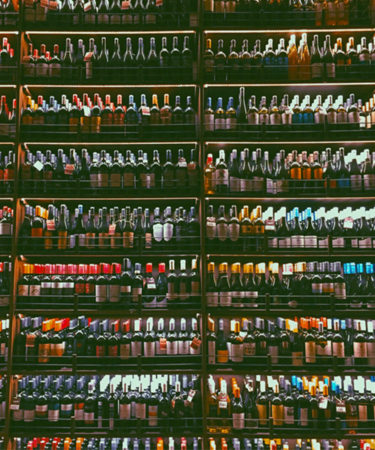
America is a large country, and so what’s popular in one geographic area might be unknown in another. Angelenos could tire of avocado toast (theoretically!) before it reaches Maine. And Texans find it adorable when New Yorkers struggle to pronounce “kolache.”
Still, certain trends have legs. They travel across the country and, in some instances, overstay their welcome. We asked sommeliers nationwide what wine trends have outlasted their purpose, and their feedback was decisive.
From cans to natural wine, here are the wine trends that need to go, according to 10 industry pros.
“The biggest wine trend that needs to end is the packaging ploy. Here is a general indicator: If an ad for a wine is focused on how cool the package is instead of what’s inside… think twice about trying it.” — Bill Burkhart, Sommelier, The Grill Room, New Orleans, La.
“Rosé isn’t just for summer!! There is so much more to explore. Age-worthy rosé is produced in Abruzzo, Provence, and Rioja, to name a few. The complexity, depth, and flavor profile lends well-aged rosé to a variety of interesting and off-the-track food pairings.” — Damien Good, General Manager, Don Angie, New York, N.Y.
“I am very traditional when it comes to my wine-packaging desires. I like the romanticism of popping a real cork, holding the neck of the bottle, etc., not pulling the ring on a can, or pushing in the spout of a cardboard box. Don’t get me wrong — I will try it all, just prefer the Old World method of delivery.” — Tiffany Tobey, Sommelier, SER Steak + Spirits, Dallas, Tex.
“The wine trend that needs to go is the need to have your ‘staple’ wines by the glass. I appreciate a list of wines by the glass that is more unique and offers wines that other places wouldn’t. Being handcuffed to offering specific grapes restricts a wine director’s ability to show off some more unique wines. We offer a Chinon (Cabernet Franc) by the glass instead of Cabernet Sauvignon at Spice Finch. This wine works much better in pairing with the cuisine of the restaurant and offers our guests an opportunity to try a style of wine that they might not have been exposed to before.” — Michael Haggerty, Beverage Director, Spice Finch, Philadelphia, Pa.
“The wine trend that needs to end is the trend towards trends. It’s fine to follow the flock but I think it’s preferable to taste open-mindedly, ask questions, formulate your own opinions, and then create your own trends for yourself based on what you like to drink.” — David Metz, Sommelier and Wine Director, Plume, Washington D.C.
“Natural wine needs to stop. Well, bad natural wine needs to stop. And the acceptance of bad wine that seems to get a pass because it’s ‘natural.’” — Christopher Bates, Master Sommelier and Owner, Element Winery, Arkport, N.Y.
“Wine made from anything else but grapes… OK, I get it, we can ferment other fruits and expand the wine industry. But we are just now beginning to get the mass market to understand that Moscato or Merlot is the grape, not the brand. If we want to add orange wine as its own section on wine lists, let’s please figure out how to not confuse our customers.” — Cha McCoy, Founder of The Communion, Cha Squared Hospitality, Harlem, N.Y.
“I would be delighted if the ‘sulfites-in-red-wine-cause-headaches’ trend would go away. There is science out there suggesting a very small percentage of people are indeed sensitive to sulfites and that the sensitivity can trigger a reaction. However, it is an asthmatic reaction, not a headache. Sulphur dioxide occurs naturally in all wines and has been used in winemaking since ancient Rome. The sulfites act as an antioxidant and antimicrobial to preserve the wines’ flavor and freshness. There are wines without additional sulfites added; however, those wines run the risk of uncleanliness or oxidation. I think likelier conclusions for red-wine headaches are high residual sugar, high tannins, or dehydration.” — Jessica Norris, Senior Director of Wine Education, Del Frisco’s Double Eagle Steakhouse
“Drinking wines for any other reason than the fact that they are delicious. Winemaking techniques and farming practices are moot if the finished product is flawed. At the end of the day, drinking wine should be a pleasurable experience, and with the plethora of options currently available, there is no reason to drink a wine that doesn’t taste great.” — Andy Wedge, Wine Director, Momofuku Nishi, New York, N.Y.
“Wine in a can. Just like I prefer Bud Light bottles over draft and especially cans, I much prefer my wine in a bottle poured slowly into a large glass.” — Tim Rawding, Sommelier and General Manager, Marsh House, Nashville, Tenn.
